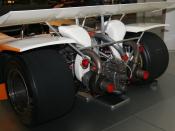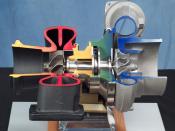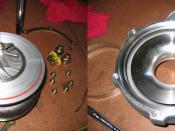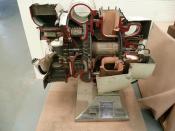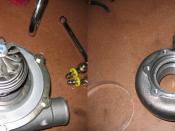It is not a big surprise that a lot of cars in the performance world rely on turbochargers to get all of their power. Nearly 60% of all cars that compete on a serious level use a turbocharger to get the performance they need to win. You might have even had one in your car and didn't even know it; they are the most beneficial source of power addition that a car can obtain.
Turbochargers are the standard wherever large amounts of power are needed. No other performance modification can increase the power potential of an engine like a turbocharger or turbo upgrade can do. If they are that great, why do we not see them on every car? Since 1998 there has been a 30% decrease in the amount of cars with factory turbochargers installed. Is it because turbo engines use more gas? Or is it because they produce more emissions? Or maybe it because they aren't as powerful as normally aspirated cars? Well it might be shocking but the answers to all these questions is a definite NO.
Let's start with the basics, a turbocharger is two impeller blades that are attached together by a shaft which are all housed in some kind of a metal housing that resembles the shape of a snail. One impeller is driven by exhaust gasses expelled from the engine, which in turn, spins the other blade that compresses clean air taken from the atmosphere and pushes it back into the engine, thus making power. There are tons of sizes of turbochargers that can range from the size of a baseball to the size of a living room. What makes them extremely popular is that they can be attached to practically anything with an engine because all it needs for it to work is some exhaust gasses to move the impellers, and all engines make exhaust gasses.
One of the largest turbo manufacturers on the world is a company called Garret, Garret decided to team up with a car company called Saab, to change the misconception that turbochargers are bad for the engine and environment. Everybody knows that turbochargers are good for power, but what a lot of people do not realize is that they can be good for the environment and even save you some gas money. Some people will be wondering how a turbo can create more power with fewer emissions and have better fuel economy. But as we know everything is possible.
For an example, a theoretical natural aspirated (no turbo) engine that makes 200hp and 200 ft-lbs of torque will probably need to be a 2.5 liter engine and have six cylinders. Fuel economy for that engine would be around 19 mpg in the city and roughly 25 mpg on the freeway.
Like many cars before, Saab has created a car with a turbo engine that has under 2 liters of displacement, and only has four cylinders. The engine is capable of making 205 hp and 210 ft- lbs of torque. You might think that the engine must need to use a lot of gas to get those power figures, but instead it can get 22 city and 33 freeway mpg.
That may all seem great, but what are some other reasons why we should spend the money on a turbocharger? One of the obvious reasons is power. An engine that has a turbocharger can make on average of 40% more power than it could if it didn't have one. One strong point where a turbocharger shines is that a naturally aspirated engine will lose a lot of power at high levels of altitude. That happens because the air is less dense, meaning there is less oxygen for the engine to consume. With less oxygen it is much harder to make power in the engine. With a turbo on the engine this is not a factor because the turbo will always make positive pressure no matter which altitude you are at. To do this the turbo has a boost controller that always controls the turbo so it will always be making the same pressure and it also keeps all that pressure under control.
Reduced emissions are another one of the turbochargers strong points. Since a normally aspirated engine relies on incoming air to make power, it can be very inefficient when the combustion chamber is lacking air, leaving behind the gas and oil to be left unburned. A turbocharger on the other hand adds more air into the chamber giving a cleaner explosion, and not leaving emission hurting particles behind.
Another plus to turbo charging is the better fuel economy. Since a smaller engine with fewer cylinders can be used to make the same amount of power, therefore, it needs less gas to operate. Giving you the fuel economy increase. In an engine, heat and friction are the main enemy in performance, leaving the engine to work harder and using more fuel to maintain the same amount of power. By using the smaller engine, there is less moving parts, so heat and friction are drastically reduced.
With all these advantages of turbochargers being used in busses, diesel vehicles, semi trucks, and many other vehicles, I wonder why we do not see them in everybody's cars out in the parking lot. Maybe only time will tell when turbochargers will be used to their full potential, but until that time comes I guess we will have to shop around a little more for the right car.
